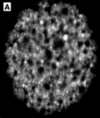Pulmonary drug delivery. Part II: the role of inhalant delivery devices and drug formulations in therapeutic effectiveness of aerosolized medications
- PMID: 14616419
- PMCID: PMC1884297
- DOI: 10.1046/j.1365-2125.2003.01893.x
Pulmonary drug delivery. Part II: the role of inhalant delivery devices and drug formulations in therapeutic effectiveness of aerosolized medications
Abstract
Research in the area of pulmonary drug delivery has gathered momentum in the last several years, with increased interest in using the lung as a means of delivering drugs systemically. Advances in device technology have led to the development of more efficient delivery systems capable of delivering larger doses and finer particles into the lung. As more efficient pulmonary delivery devices and sophisticated formulations become available, physicians and health professionals will have a choice of a wide variety of device and formulation combinations that will target specific cells or regions of the lung, avoid the lung's clearance mechanisms and be retained within the lung for longer periods. It is now recognized that it is not enough just to have inhalation therapy available for prescribing; physicians and other healthcare providers need a basic understanding of aerosol science, inhaled formulations, delivery devices, and bioequivalence of products to prescribe these therapies optimally.
Figures








References
-
- Clark AR. Medical aerosol inhalers. Past, present and future. Aerosol Sci Technol. 1995;22:374–391.
-
- Grossman J. The evolution of inhaler technology. J Asthma. 1994;31:55–64. - PubMed
-
- Newman SP, Clarke SW. Inhalation devices and techniques. In: Clark TJH, Godfrey S, Lee TH, editors. Asthma. 3. London: Chapman & Hall; 1992. pp. 469–505.
-
- Pedersen S. Inhalers and nebulizers: which to choose and why. Resp Med. 1996;90:69–77. - PubMed
-
- Ganderton D. Targeted delivery of inhaled drugs: current challenges and future goals. J Aerosol Med. 1999;12(1):s3–s8. - PubMed
Publication types
MeSH terms
Substances
LinkOut - more resources
Full Text Sources
Other Literature Sources
Medical
Research Materials

